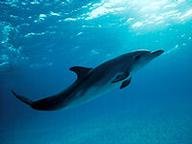Quiz Answer Key and Fun Facts
1. Manatees belong to the order Sirenia. Where did that name come from?
2. Which of the following is NOT a species of manatee?
3. All manatees live in salt water.
4. Which of the following is another name for the manatee?
5. In which class of animals are manatees?
6. What kind of water do manatees prefer?
7. What special feature allows manatees to grasp vegetation?
8. Manatees are on the International Union for Conservation of Nature (IUCN) vulnerable species list. What does this mean?
9. Algae bloom in the Gulf of Mexico creates a toxin that is deadly to manatees. What is this mass algae bloom called?
10. So how huge is a manatee anyway?
Source: Author
deputygary
This quiz was reviewed by FunTrivia editor
Tizzabelle before going online.
Any errors found in FunTrivia content are routinely corrected through our feedback system.


